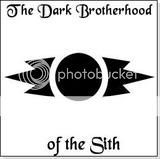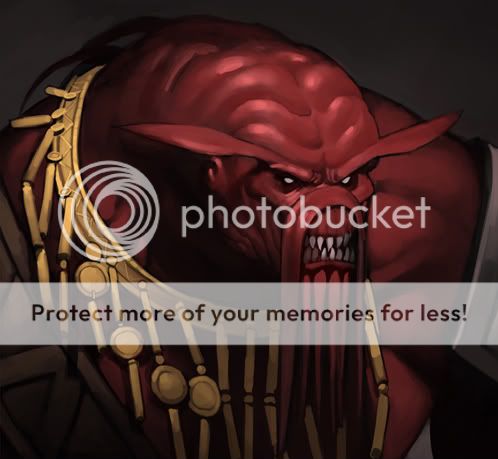
There is no peace, there is anger.
There is no fear, there is power.
There is no death, there is immortality.
There is no weakness, there is the Dark Side.
I am the heart of the darkness.
I know no fear, but rather I instill it in my enemies.
I am the destroyer of the worlds.
I know the power of the Dark Side.
I am the fire of hate: All the universe bows before me.
I pledge myself to the Dark Side;
for I have found true life in the death of my enemies.
We are a sect of Force-sensitives who utilized the dark side of the Force. The term "Sith" originally referred to a species of alien native to the planets Korriban and Ziost, who were later enslaved and ruled by exiled Dark Jedi from the Galactic Republic. These Dark Jedi had once been members of the so-called "Jedi Order", a hypocritical ego-tistical Force religion, bent on gaining fame and fortune and doing anything they can to better themselves. The Dark Jedi, who refused to rely exclusively on the light side, challenged the Jedi by giving into the dark and starting the Hundred-Year Darkness. They were defeated exiled from known space, which lead to their discovery of the Sith species. Following centuries of interbreeding and mixing of cultures between the aliens and the exiles, the Sith would no longer be identified by their race, but by their dedication to the grand and ancient Sith philosophy. This religious order would survive in many different incarnations throughout Galactic History. The rise of a new leader, or Dark Lord, would often cause drastic reorganizations in the cult, however we Sith seem to always be charactarized by others as bent on destroying the Jedi Order, and consumed with gaining more power.
This is not true, needless to say.
We of the Sith believe that conflict is the only true test of one's ability, and so emphasize its importance. It is our belief that conflict challenged both individuals and civilizations, and so forced us to grow and evolve, making us stronger and more powerful. We believe that the avoidance of conflict – like the pacifist teachings of the pathetic Jedi – resulted in stagnation and utter decline.
Another purpose served by conflict was the elevation of the strong and the death of the weak. By encouraging strife, the strong are able to exercise their power while the weak were weeded from the ranks of the Sith. A core tenant to Sith philosophy was self-reliance and the idea that an individual only deserved what they were strong enough to take. Likewise, morality was treated as an obstacle to be overcome, as it gets in the way of a true Sith's ability to recognize and seize opportunities for advancement and self-empowerment.
Such philosophies are embraced and taught at Sith academies, where students are encouraged to challenge one another and fight for prestige that would be recognized by the headmaster of the academy. At the academy on Korriban during the Jedi Civil War, students were tasked with gaining prestige so they might become one of the "chosen few" accepted into the ranks of Darth Malak's Sith Empire. The strive to achieve prestige caused rivalries and animosity between the students, as there were few tasks that offered prestige, and many prospective Sith. Similarly, the students of the academy during the New Sith Wars were pitted against each other in dueling sessions atop the academy. It was during these dueling sessions that intense rivalries were formed - rivalries that resulted in the deaths of students Fohargh and Sirak at the hands of Darth Bane.
Below is a brief history of the Sith...
----------------------------------------------------------------------------------
"Once we were mighty Jedi of the Republic, brothers in the Force. But the Great Schism between the dark side and the light turned Jedi against Jedi. Our ancestors were defeated, driven off...cast out!"
―Marka Ragnos
Before the founding of the Jedi Order and the discovery of the dark side, the Sith species evolved on Korriban. The Sith species began society around 130,000 BBY and about 30,000 years later, their culture and religion was formed. Around 28,000 BBY legendary Sith King Adas ruled his people and their Empire. Adas had ruled as a warlord for a time, however he was able to unite the people of Korriban and was pronounced the Sith'ari, or overlord. Adas' reign lasted for several centuries ending only after the invasion of Korriban by the Rakata of the Infinite Empire.
Initially friendly, the Rakata taught Adas how to create holocrons and lent their knowledge of space travel to the Sith. However, it soon became apparent that the Rakata intended to take the Sith people as slaves, and Adas launched a war to rid them from his world. He was successful, however the victory cost him his life. The Rakata left behind a Star Map on the planet, and possibly the origin for the Darth title.
The death of Adas threw Korriban into civil war, with many different Sith scrambling for power. The world was devastated from the years of conflict, and no new leader arose from the ashes. The Sith people moved their center of government and culture to the world of Ziost, and left Korriban to become a tomb world for their fallen leaders.
In 25,000 BBY, elsewhere in the galaxy, the Galactic Republic was forming. On the planet Tython, scholars, scientists, warriors, and religious figures met to discuss an anomalous energy field present in the galaxy that would become known as the Force. In these discussions, several individuals advocated the use of Bogan, what would become known as the dark side. The followers of the light rejected this idea and defeated the followers of Bogan in the Force Wars of Tython.
Following the conflict, the victors established the Jedi Order, a group of warrior-monks who followed the light side. Around 24,500 BBY, a Jedi named Xendor accepted the teachings of the dark side and left the order, along with many other students calling themselves the Legions of Lettow. The resulting conflict, known as the First Great Schism, ended with Xendor dead and the Legions of Lettow defeated.

The Massassi were one of the two original Sith subspecies.
The dark side would not have a strong hold until 7,000 BBY, when another group of Jedi left the Order to follow the dark path. These Jedi had been delving into alternative uses for the Force, and became increasingly reliant on it. They discovered that the Force could twist life to serve their purposes and create new life. These practices were looked upon with apprehension by other weak-minded Jedi, as memories of the First Schism were still present. Feeling their power was threatened, the rogue Jedi sought supporters within the Order, but were turned away. Arguments for their cause turned to conflicts, and these Jedi were exiled from the Order. Taking their teachings with them, they became known as Dark Jedi, and launched a war against the Jedi Order that would come to be known as the Hundred-Year Darkness.
"But in their hearts they never forgot the Jedi. The hatred for the Jedi Order burns in their veins like fire, and it echoes in their teachings."
―Darth Traya
----------------------------------------------------------------------------------
We Sith the most infamous of all dark side religions, and we are often seen as the pinnacle of power within the dark side. Throughout our long history, we have commanded several Empires and initiated many galactic wars. With such great influence, the Sith religion inspires many cults that aren't technically part of the Sith Order, nor are they comprised of actual Sith. Instead, they are founded and made up of Sith devotees and other Force-sensitives dedicated to prolonging the teachings and the memory of the Sith. Such cults include the Naddists, the Disciples of Ragnos, and the Krath.
Below is brief knowledge of the Sith's code, what it stands for, and why we beleive in it so.
The Code of the Sith
Peace is a lie, there is only passion.
Through passion, I gain strength.
Through strength, I gain power.
Through power, I gain victory.
Through victory, my chains are broken.
The Force shall free me.
—The Sith Code
The code of the Sith is the mantra which states the core beliefs of the Sith Order.
Following the embrace of passion, which was believed to be a powerful aspect of nature, the code explains that the strength granted by passion leads to power, which then leads to victory. By way of victory, we beleive and know that we can free ourselves from the limitations of regular beings, and achieve their potential. Neophyte Sith believe that the breaking of chains represented the ability to do whatever one wished, however more seasoned members of the Order recognize that the true meaning of freedom is the end of all physical restrictions and the ability to attain perfection. We of the Sith beleive that the only being who could truly live up to the code and attain freedom was the Sith'ari, and as such saw it as a guideline by which to live, not a law to abide by. Needless to say anyone of the Sith knows this code by heart, and knows exactly what it means, word for word.

Darth Krayt recites the Sith Code.
In conclusion, we are nothing short of the greatest organization of beings the universe has ever seen, and will continue to exist as such. No one and nothing will stand in our way.
We are.
The Sith.

Below is a useful, helpful website that has knowledge pertaining to anything Star Wars.
http://starwars.wikia.com/wiki/The_Sith
